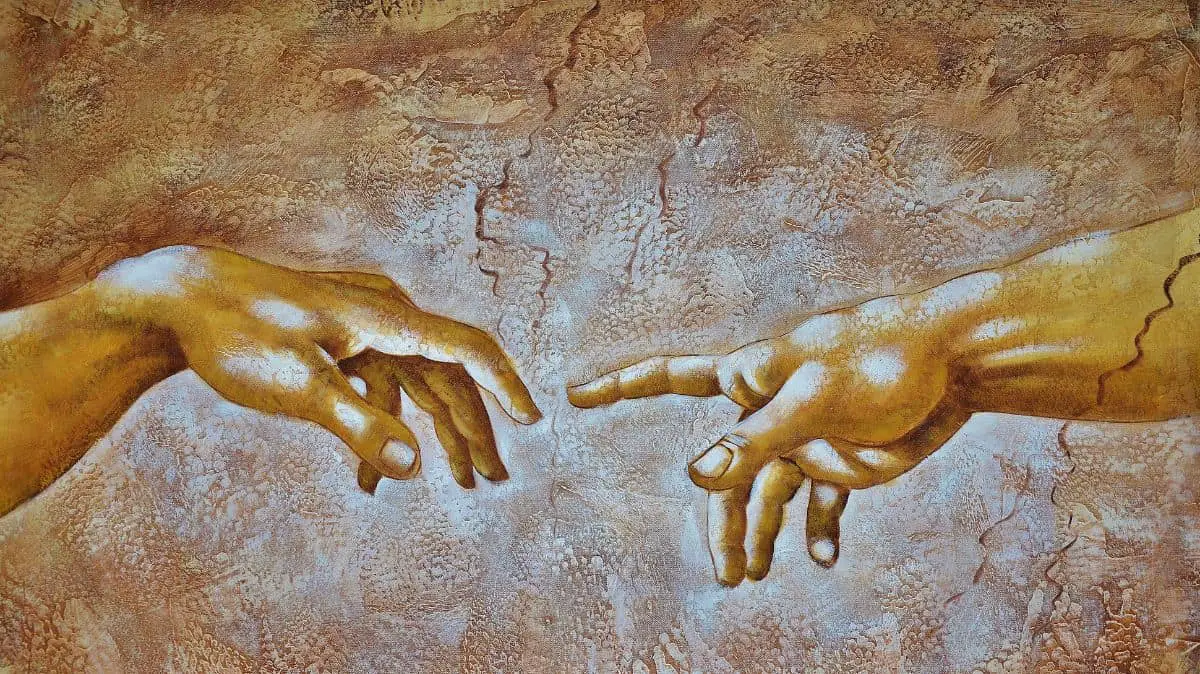
Writing an analysis of a picture can be a little daunting, especially if analyzing and essay writing are not your strengths. Not to worry. In this tutorial, you’ll learn how to do it, even if you’re a beginner.
To write an effective visual analysis, all you need to do is break the image into parts and discuss the relationship between them. That’s it in a nutshell.
Writing an image analysis essay, whether you’re analyzing a photo, painting, or any other kind of an image, is a simple, 6-step process. Let me take you through it.
Together, we’ll analyze a simple image and write a short analysis essay based on it. You can analyze any image, such as a photo or a painting, by following these steps.
Here is a simple image we’ll analyze.

And we’re ready for the…
6 Steps to Writing a Visual Analysis Essay
Step 1: Identify the Elements
When you look at this image, what do you see?
Right now, you are not just a casual observer. You are like a detective who must inspect things thoroughly and be careful not to miss any details.
So, let’s put on our Sherlock Holmes hat, grab a magnifying glass, and make a list of all the major and some minor elements of this picture.
What do we observe?
- Children. How many? Four.
- Children’s hands. Four pairs.
Great. These are all human elements. In fact, it would be useful for us to have two categories of elements: human and non-human.
When we group elements into categories, it will help us later when we’ll be writing the essay. Categories make it easier to think about the elements.
What other elements do we see?
- The hands are holding soil.
- Each handful of soil also has a tiny plant in it.
- Finally, we see the green lawn or ground on which the children stand.
These are all of the obvious elements in the image. But can we dig deeper and observe more?
Again, wearing our Sherlock Holmes hat, our job is to gather information that may not be immediately obvious or noticeable.
Let’s take another look, using our detective tentacles:
- The children’s hands are arranged in a circle.
- The children’s skin color varies from lighter to darker.
- The children wear summer clothes.
You may have noticed these elements even when you first saw the image. In that case, great job!
It looks like we’ve covered all the elements. We’re ready to move on to the next step.
Step 2. Detect Symbols and Connections
What does Sherlock Holmes or any good detective do after basic observation? It is time to think and use our logic and imagination.
We will now look for symbols and any connections or relationships among the elements.
Identifying Symbols
- Children symbolize future and hope.
- Their hands form a circle, creating a unifying effect. The symbol is unity, and there is power in unity.
- Children’s hands hold soil, and soil symbolizes earth, perhaps planet Earth.
- The earth holds young plants which symbolize the environment and ecology.
- The young plants also symbolize youth and the future.
- The children wear summer clothes, and summer symbolizes happiness and freedom because this is when children are on vacation and enjoy life.
Great. Now, let’s see if we can make some connections and identify some relationships among the elements and symbols.
We will use our imagination to put together some kind of a meaning.
In analyzing an image, we want to understand what the creator or the artist is trying to convey.
Do artists and photographers always want to convey something or is it sometimes just a picture?
It doesn’t matter because we never know what the artist really thought when creating the work. We’re not mind readers.
But we can always gather meaning using our own logic and imagination. We can derive meaning from any image. And that’s all we need to do to write an analysis essay.
Finding Connections and Relationships
Let’s allow our imagination to roam free and write down a few thoughts. Some ideas will be more obvious than others.
- This entire image seems to be about the future of the environment.
- Why is this future important? It’s important because of the future generations, symbolized by the children.
- A strong sense of long-term future is conveyed because not only do the children hold plants, but these are baby plants. The message is “children hold future generations.”
- The variety of skin colors implies diversity. Also, the hands form a circle. Together, these two elements can mean: “global diversity.”
As you can see, we can derive really interesting meaning from even a simple image.
We did a great job here and now have plenty of material to work with and write about. It’s time for the next step.
Step 3. Formulate Your Thesis
In this step, your task is to put together an argument that you will support in your essay. What can this argument be?
The goal of writing a visual analysis is to arrive at the meaning of the image and to reveal it to the reader.
We just finished the analysis by breaking the image down into parts. As a result, we have a pretty good idea of the meaning of the image.
Now, we need to take these parts and put them together into a meaningful statement. This statement will be our thesis.
Let’s do it.
Writing the Thesis
This whole picture may mean something like the following:
“The ecological future of our planet is in the hands of the children all over the world.”
This sounds good. Let’s write another version:
“Humanity must be mindful of the ecological future of our planet for the sake of the children all over the world.”
This sounds good, as well. What is the difference between the two statements?
The first one places the responsibility for the future of the planet on children.
The second one places this responsibility on the entire humanity.
Therefore, the second statement just makes more sense. Based on it, let’s write our thesis.
“This photo conveys the message that humanity must be mindful of the ecological future of our planet for the sake of the children all over the world.”
Great!
We now have our thesis, which means we know exactly what argument we will be supporting in the essay.
Step 4: Write the Complete Thesis Statement
While a thesis is our main point, a thesis statement is a complete paragraph that includes the supporting points.
To write it, we’ll use the Power of Three. This means that we are going to come up with three supporting points for our main point.
This is where our categories from Step 1 will come in handy. These categories are human and non-human elements. They will make up the first two supporting points for the thesis.
The third supporting point can be the relationships among the elements.
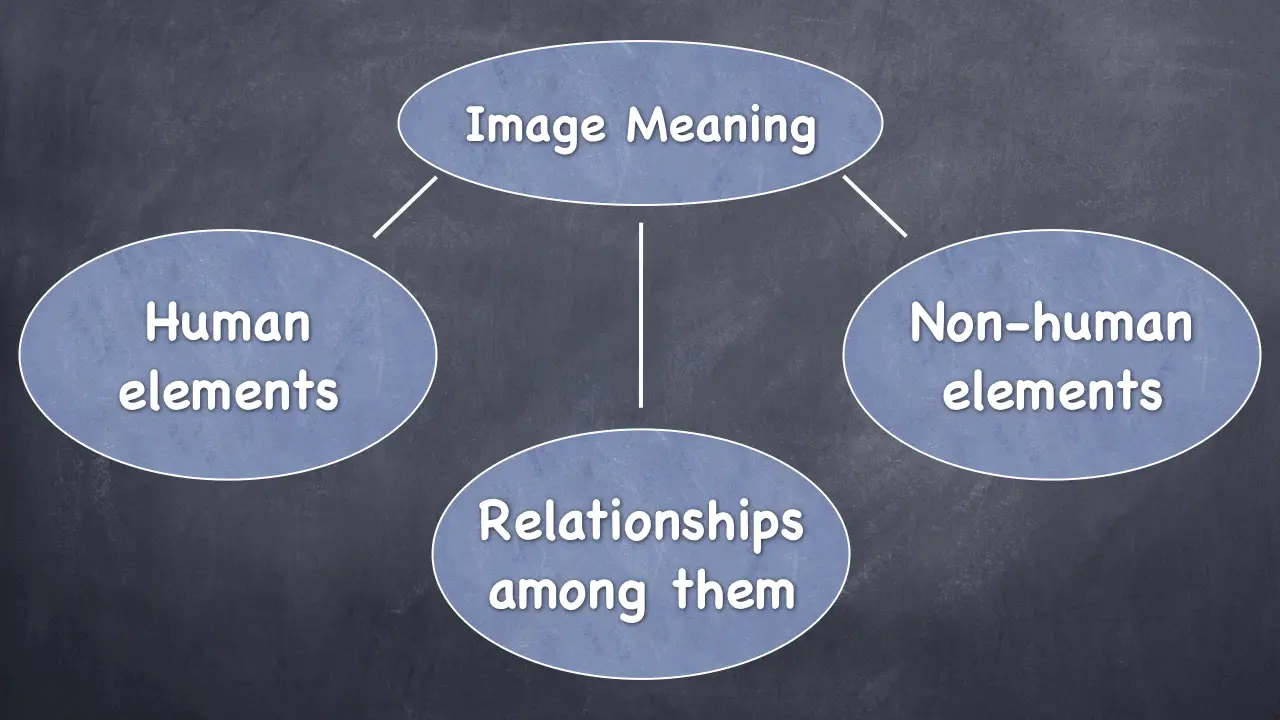
We can also pick a different set of supporting points. Our job here is to simply have three supporting ideas that make sense to us.
For example, we have our elements, symbols, and connections. And we can structure the complete argument this way:
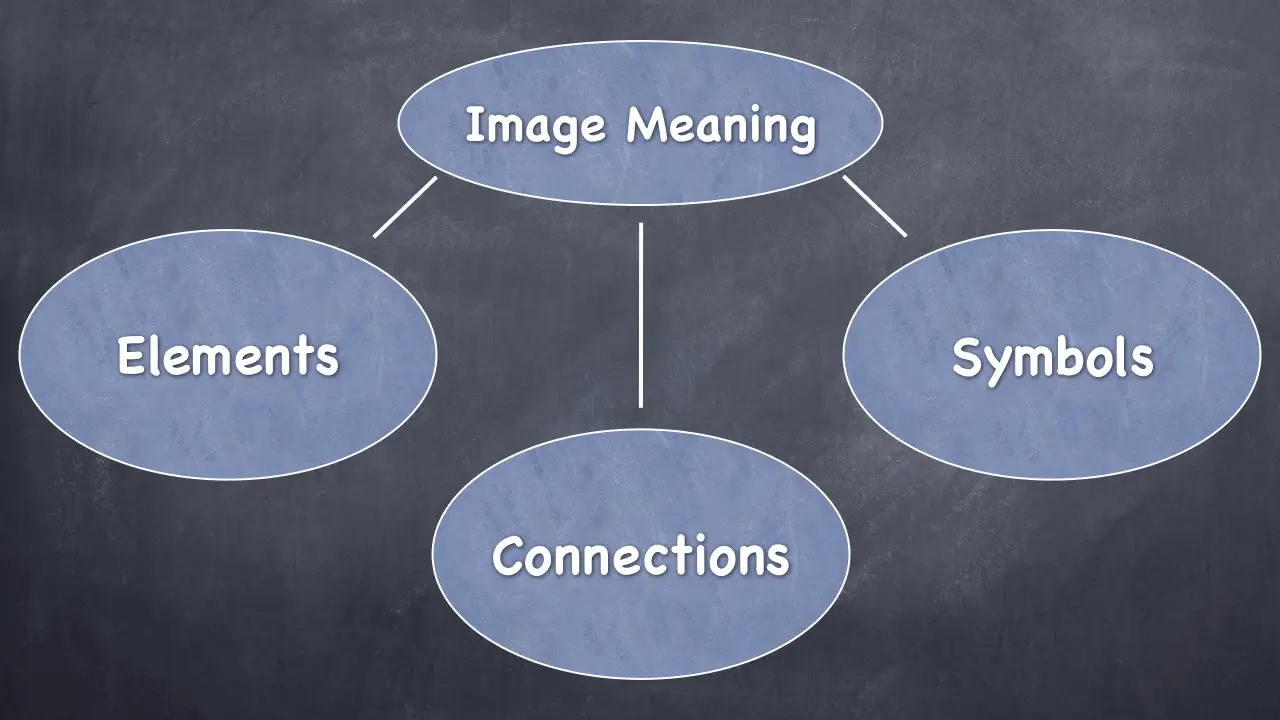
All we really need is one way to organize our thoughts in the essay. Let’s go with the first version and formulate the supporting points.
Here’s our main point again:
“This photo conveys the message that humanity must be mindful of the ecological future of our planet for the sake of the children all over the world.”
Here are our supporting points:
- The photographer uses the image of children to symbolize the future.
- The non-human elements in the photo symbolize life and planet Earth.
- The author connects many ideas represented by images to get the message across.
Now we have everything we need to write the complete thesis statement. We’ll just put the main and the supporting statements into one paragraph.
Thesis Statement
“This photo conveys the message that humanity must be mindful of the ecological future of our planet for the sake of the children all over the world. The photographer uses the image of children to symbolize the future. The non-human elements in the photo symbolize life and planet Earth. The author connects ideas represented by these images to get the message across.”
Step 5: Write the Body of Your Essay
At this point, we have everything we need to write the rest of the essay. We know that it will have three main sections because the thesis statement is also our outline.
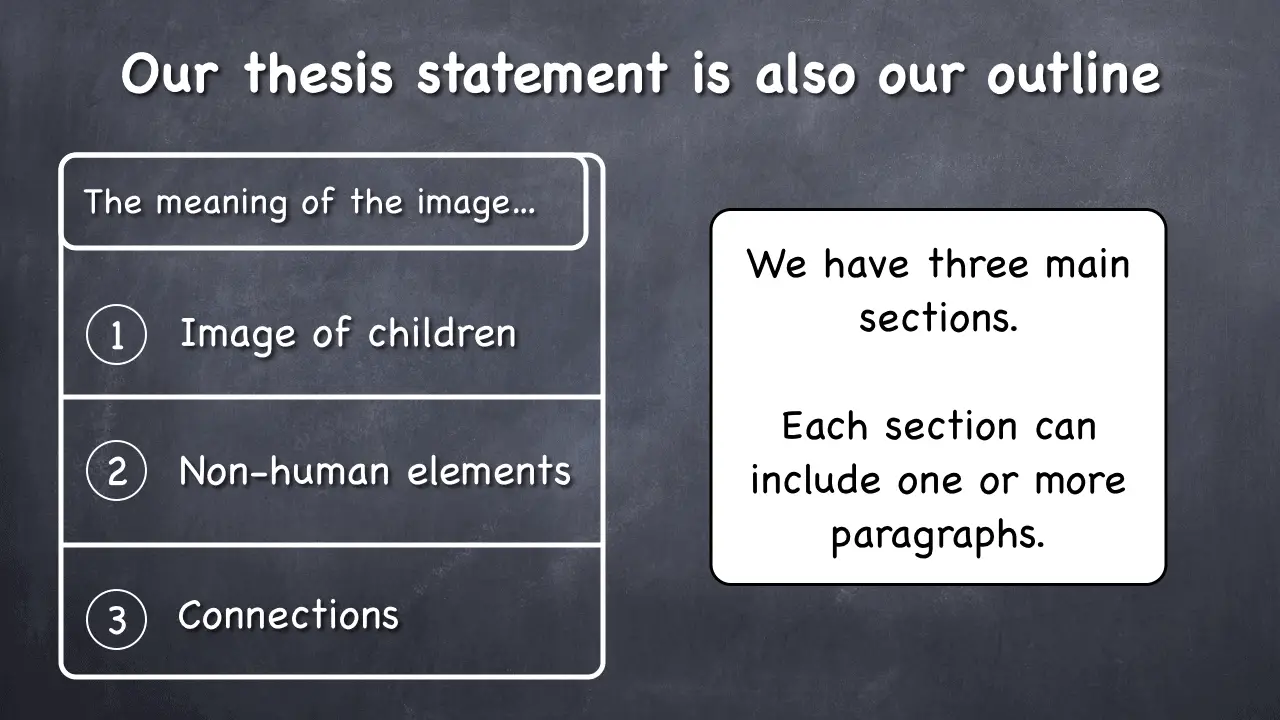
We’re ready to write the body of the essay. Let’s do it.
Body of the Essay (3 paragraphs)
“The author of this photograph chose children and, more specifically, children’s hands in order to convey his point. In many, if not all human cultures, children evoke the feelings of hope, new beginnings, and the future. This is why people often say, ‘Children are our future.’ Furthermore, the children in the photo are of different ethnic backgrounds. This is evident from their skin colors, which vary from lighter to darker. This detail shows that the author probably meant children all over the world.
The non-human elements of the picture are the plants and the soil. The plants are very young – they are just sprouts, and that signifies the fragility of life. The soil in which they grow evokes the image of our planet Earth. Soil also symbolizes fertility. The clothes the children wear are summer clothes, and summer signifies freedom because this is the time of a long vacation for school children. Perhaps the author implies that the environment affects people’s freedom.
Finally, the relationships and connections among these elements help the photographer convey the message that humans should be mindful of their decisions today to ensure a bright future for the planet. This idea can be arrived at by careful examination. First, the children’s hands are arranged in a circle, which is a symbol of our planet and also signifies the power of unity. The future depends on people’s cooperation. Second, the children seem to be in the process of planting. The author emphasizes long-term future because the children hold baby plants. In other words, they ‘hold the future of other children’ in their hands. Third, the placement of the sprouts, which rest inside the soil in children’s hands, is a strong way to suggest that the future of the ecology is literally ‘in our hands.’”
Step 6. Add an Introduction and a Conclusion
Before we continue, I have an entire detailed article on how to write an essay step-by-step for beginners. In it, I walk you through writing every part of an essay, from the thesis to the conclusion.
Introduction
That said, your introduction should be just a sentence or two that go right before you state the thesis.
Let’s revisit our thesis statement, and then write the introduction.
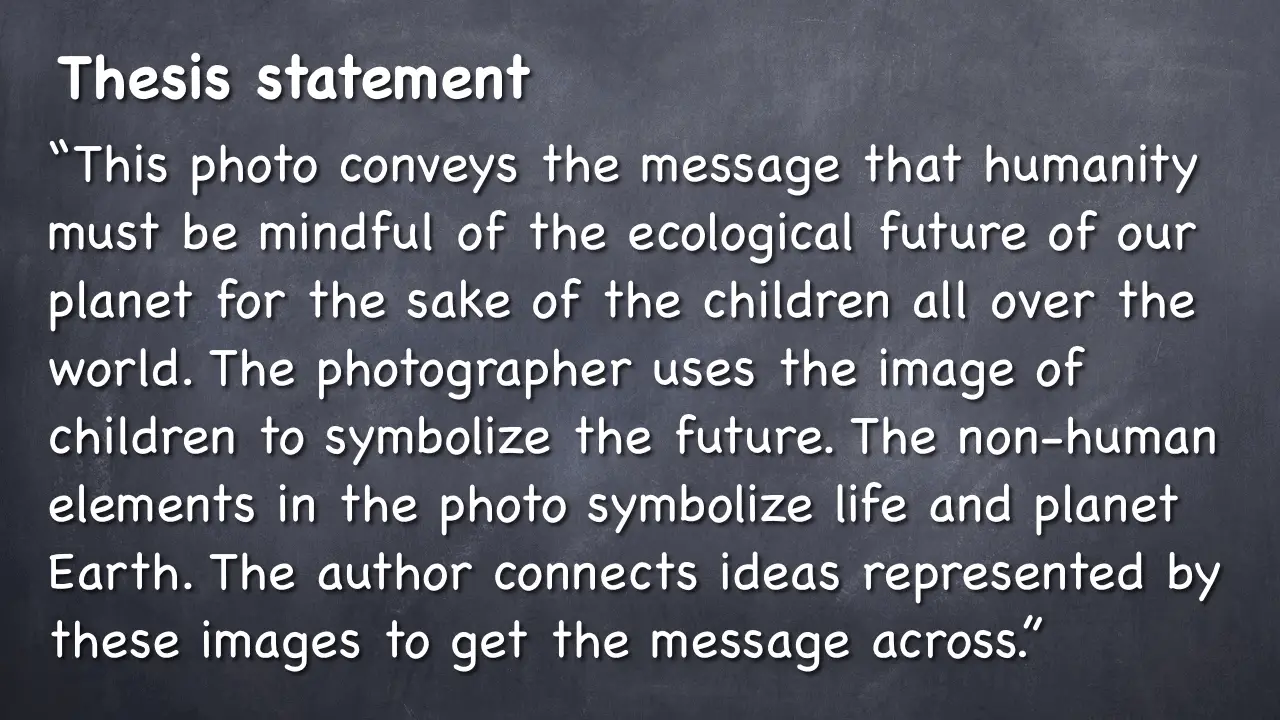
And now let’s write an introductory sentence that would make the opening paragraph complete:
“Photography is a powerful medium that allows to make an important statement visually.”
Now, if you read this intro sentence followed by the thesis statement, you’ll see that they work great together. And we’re done with the opening paragraph.
Conclusion
Your conclusion should be just a simple restatement. You can conclude your essay in many ways, but this is the basic and time-proven one.
Let’s do it:
“In sum, the author employs the images of children and young plants to convey the message that the future of our planet depends on what people think and do today.”
We simply restated our thesis here. Your conclusion can be one or more sentences. In a short essay, a sentence will suffice.
Guess what – we just wrote a visual analysis essay together, and now you have a pretty good idea of how to write one.
Hope this was helpful!
Tutor Phil
